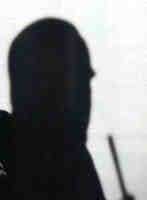
I've been reading a sickening amount of bubbly prose about "Web 2.0" recently. What the heck is Web 2.0? Well, Web 2.0 is a bit like pornography: hard to define with any precision but immediately recognizable once you're staring at it.
Despite Web 2.0's self-declared amorphousness, there are
some formal criteria: Web 2.0 sites tend to rely on UGC (User-generated content, e.g. updated Bulletin board-style "interactivity"), AJAX, Blogging, Tagging, Social Networking, RSS, Mapping, and a bunch of other stuff that with a high novelty factor but hardly as revolutionary as the good old Web 1.0-era hyperlink. Oh - I almost forgot: "rounded corners." Just about every Web 2.0 site has a design incorporating "rounded corners," and I guess a lot of people this design flourish is fresh, but has it occured to anyone that
TheGlobe.com sported rounded corners almost 10 years ago?
I don't know who invented the term "Web 2.0," but he or she is a marketing genius. Rebranding the Web in this way does two things: first, it distances today's entreprenurial class from the disaster of Web 1.0, which is already a fleeting memory for many now working in this business. Secondly, it suggests that there's something radically new about the way technology, capital, and hype are now intersecting (there isn't). The structural difference between Web 1.0 and Web 2.0 is the way these Web properties (most of which will fail) are being financed. In Web 1.0, the money was stolen from investors in the public market through the mechanism of the IPO. Today, the scam has gone corporate, and instead of fleecing Mom & Pa's 401K, today's entreprenuers are fleecing old-line media companies and ad agency holding companies, who are paying obscene amounts of money for properties which will probably collapse like balloons within 24 months.
So yes, I'm a skeptic. I think that that Web 1.0/Web 2.0 dichotomy is pure marketing bullshit. Marketing people have infested the technology business to a completely unacceptable degree, and this is their handiwork. (I know this because I'm a marketing person myself, not by choice, but because nothing else I've tried pays the bills).
Anyway, here are a few Web properties that died long before Web 2.0 was born. In many ways, they were much more innovative than today's garden variety bookmark-photo-sharing-social-networking-with-AJAX Web 2.0 monstrosity.
EMarker.comhttp://www.disobey.com/ghostsites/show_exhibit/emarker2You hear a great song on the radio. You grab your EMarker ("The Gotta Have it Gadget"), push a button, plug it into your PC and whammo - you've bought it. And unlike iTunes, your PC isn't brought to a standstill by Apple's bloatware music store. I like it!
eMemories.comhttp://www.disobey.com/ghostsites/show_exhibit/ememoriesLong before Flickr, eMemories pioneered photo-sharing on the Web. In a parallel universe somewhere, it's the one getting all the accolades, whereas Flickr languishes in obscurity.
MySpace.comhttp://www.disobey.com/ghostsites/show_exhibit/freediskspaceFew know that Myspace.com wasn't always a place for Friends: it was a place for free file-sharing, and it failed miserably back in 2000.
Go.comhttp://www.disobey.com/ghostsites/show_exhibit/goDisney's search engine could have been the next Google. But the mousketeers failed to imagineer themselves beyond mediocrity, and gave up before the battle had even begun.
GatherRound.comhttp://www.disobey.com/ghostsites/show_exhibit/gatherround1Another photo-sharing site that could have been the next Flickr.
Beenz.com and
Flooz.comhttp://www.disobey.com/ghostsites/mef/beenz.shtmlhttp://www.disobey.com/ghostsites/show_exhibit/flooz1Wow - do you mean that the Web could have its own currency that has nothing to do with what Alan Greenspan or Ben Barnanke does with interest rates? That sounds Web 2.0-like to me!
Mr. Swaphttp://www.disobey.com/ghostsites/show_exhibit/mrswap1This site, which encouraged users to swap their old junk for pennies, was way ahead of its time. I hear that another Silicon Valley startup calle LaLa.com has a very similar idea, and is now running with it with millions in funding. The more things change, they more they stay the same (but of course, everything will work out much better this time around)!
Pseudo.comhttp://www.disobey.com/ghostsites/show_exhibit/pseudo1Video is hot, hot hot, and Madison Avenue is plunking millions into video ads, and that's why Google, Yahoo, iTunes and YouTube are all battling for video views. How Web 2.0! Wait a minute, are you telling me that Pseudo.com did this very same thing years and years ago, and that nobody gave a damn? Yup.
I'll be revisiting some of the entries in the
Museum of Electronic Failure from time to time, especially those which have a high Web 2.0 quotient. Please stop by again.
Labels: Pseudo.com, Silicon Alley History, Web 1.0, Web 2.0
 An article on Gawker.com summarizes the earnest efforts of Time Magazine Managing Editor Richard Stengel to induce his reluctant, pre-Web staff of writers to write online, and I got a nostalgic chuckle out of it. Way back when I worked for Time Inc., our division was one of a handful of entities in Time Inc's vast fleet of publications that was serving up content daily on the Web, and we were regarded as low-end-of-the-totem-pole geeks by Time's "real" writers, who wrote their copy at a leisurely pace, went home at 5:00 PM, and got very drunk each Friday when the liquor cart appeared on schedule.
An article on Gawker.com summarizes the earnest efforts of Time Magazine Managing Editor Richard Stengel to induce his reluctant, pre-Web staff of writers to write online, and I got a nostalgic chuckle out of it. Way back when I worked for Time Inc., our division was one of a handful of entities in Time Inc's vast fleet of publications that was serving up content daily on the Web, and we were regarded as low-end-of-the-totem-pole geeks by Time's "real" writers, who wrote their copy at a leisurely pace, went home at 5:00 PM, and got very drunk each Friday when the liquor cart appeared on schedule. I've been reading a sickening amount of bubbly prose about "Web 2.0" recently. What the heck is Web 2.0? Well, Web 2.0 is a bit like pornography: hard to define with any precision but immediately recognizable once you're staring at it.
I've been reading a sickening amount of bubbly prose about "Web 2.0" recently. What the heck is Web 2.0? Well, Web 2.0 is a bit like pornography: hard to define with any precision but immediately recognizable once you're staring at it.


